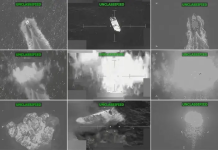BRASILIA, AUG 10: A regional turboprop plane fell into what aviation experts called a flat spin before crashing in a residential neighbourhood near Sao Paulo in Brazil on Friday, killing all 61 people on board.
Regional carrier Voepass said the plane, bound for Sao Paulo’s international airport, took off from Cascavel, in the state of Parana, and crashed at around 1:30 p.m. (1630 GMT) in the town of Vinhedo, some 80 km (50 miles) northwest of Sao Paulo.
Video shared on social media showed the ATR-72 aircraft spinning out of control as it plunged down behind a cluster of trees near houses, followed by a large plume of black smoke.
Nearby resident Daniel de Lima said he heard a loud noise before looking outside his condominium in Vinhedo and seeing the plane in a horizontal spiral.
“It was rotating, but it wasn’t moving forward,” he told Reuters. “Soon after it fell out of the sky and exploded.”
City officials at Valinhos, near Vinhedo, said a home in the local condominium complex had been damaged after the plane crashed into its backyard. None of the residents were hurt.
“I almost believe the pilot tried to avoid a nearby neighborhood, which is densely populated,” de Lima said.
The plane’s unusual final circling motion before hitting the ground triggered widespread curiosity among aviation experts, leading some to speculate that ice had built up on the plane or it had experienced engine failure, but investigators said it was too early to determine the cause of the crash.
“Today ice was predicted (at the altitudes the plane was flying at), but within the acceptable range,” Voepass Chief Operations Officer Marcel Moura told a press conference.
“But the plane is sensitive to ice, that could be a starting point,” Moura said, adding the plane’s de-icing system, along with all other systems, had been deemed operational before takeoff.
Brazilian aviation engineer and crash investigator Celso Faria de Souza told Reuters that a buildup of ice could have caused the plane to stall and spiral in the way that it did.
An ATR-72 crashed in 1994 in Indiana, killing 68, after the plane was unable to bank due to ice accretion. Another ATR-72 stalled out in 2016 in Norway after ice built up on the plane, but the pilot was able to regain control of the aircraft.
An ATR-27 also crashed in Nepal in 2023, with the final report attributing pilot error.
The head of Brazilian aviation accident investigation center Cenipa said the plane’s so-called “black box” containing voice recordings and flight data had been recovered from the site.
U.S. aviation safety expert Anthony Brickhouse said investigators would look at things like weather and whether the engines and controls were functioning properly ahead of the crash.
“From what I’ve seen, it was definitely what we would call loss of control,” he said.
Flightradar data showed significant gyrations in speed before the crash, U.S. aviation safety consultant and former commercial pilot John Cox said, cautioning that he would want to verify the data but that something “really significant” happened to cause the plane to spin when it came down.
“It appears that there may have been some catastrophic event before that loss of control,” he said.
Cenipa head Marcelo Moreno told a press conference that initial reports indicated the aircraft had not reached out to traffic control to report an emergency.
Voepass, Brazil’s fourth-largest airline by market share, had originally reported 62 people aboard the aircraft. Local outlet Globo News interviewed two men who said they had missed the flight.
In total, the plane was carrying 57 passengers and four crew, Voepass said. All were carrying Brazilian-issued documents, the carrier reported.
Some of the passengers were doctors from Parana heading to a seminar, Governor Ratinho Junior told journalists.
“These were people who were used to saving lives, and now they’ve lost theirs in such tragic circumstances,” he said.
Franco-Italian ATR, jointly owned by Airbus and Leonardo, is the dominant producer of regional turboprop planes seating 40 to 70 people.
ATR told Reuters that its specialists were “fully engaged” with the investigation into the crash and its customers.
The motor on the plane was a PW 127 produced by Pratt & Whitney Canada, its parent company RTX Corp confirmed to Reuters. RTX said that it had offered assistance in the investigation.
Both French and Canadian investigators will participate in the investigation, Moreno said. Europe’s safety regulator also said it would offer technical assistance.
The crash is Brazil’s deadliest since 199 people were killed in 2007 on a flight operated by TAM, which later joined LAN to become what is now LATAM Airlines.Brasília

















